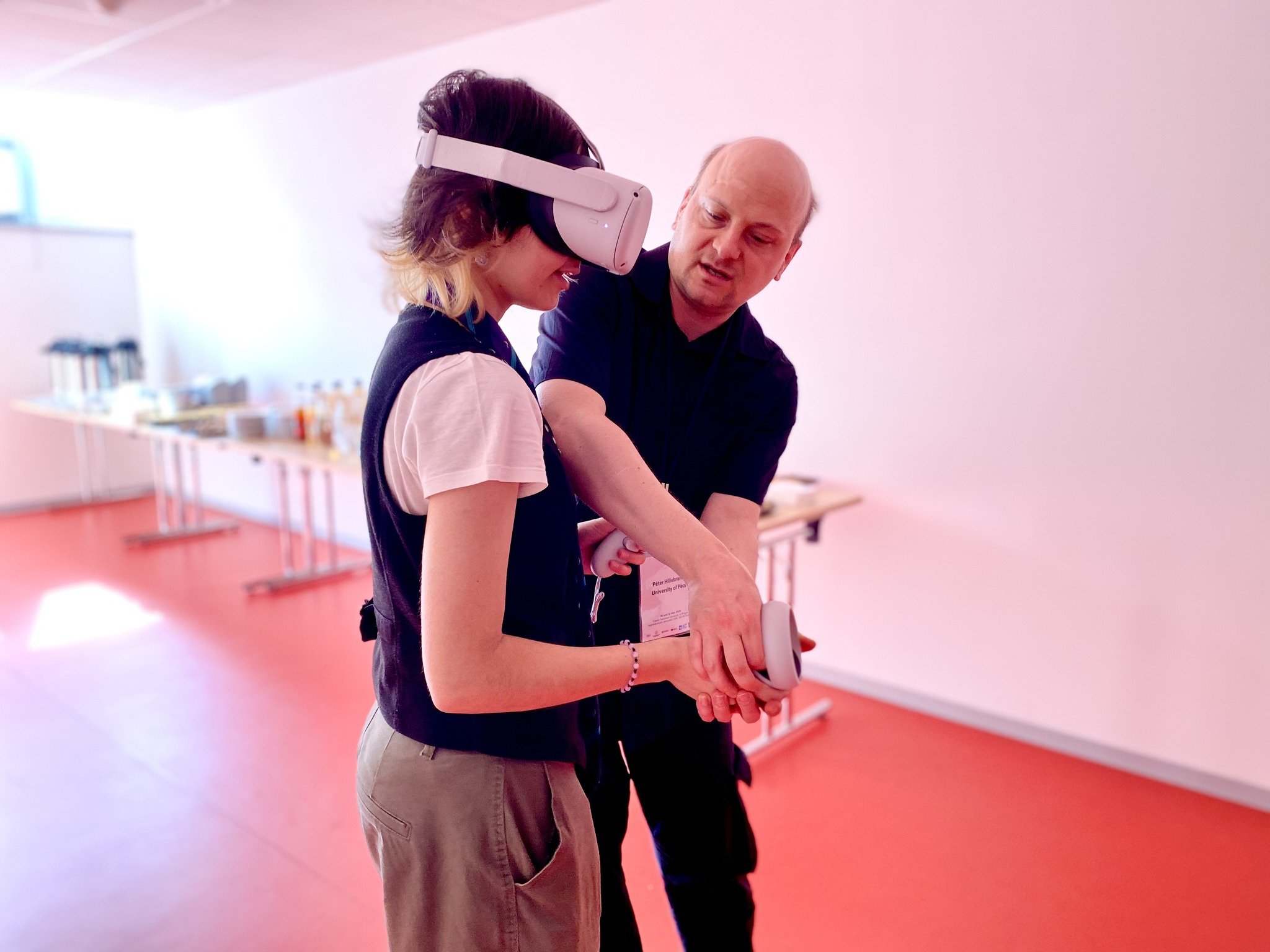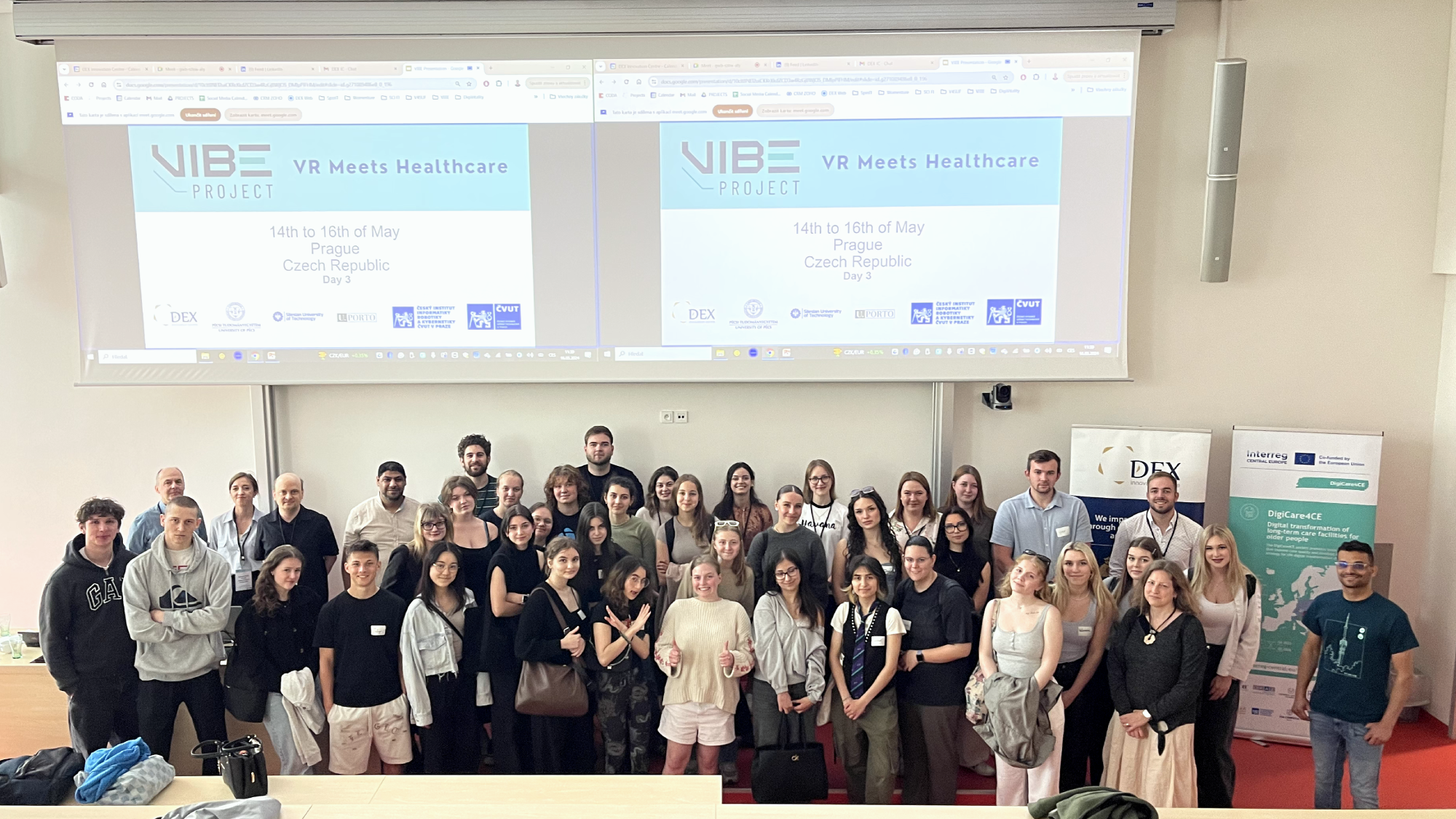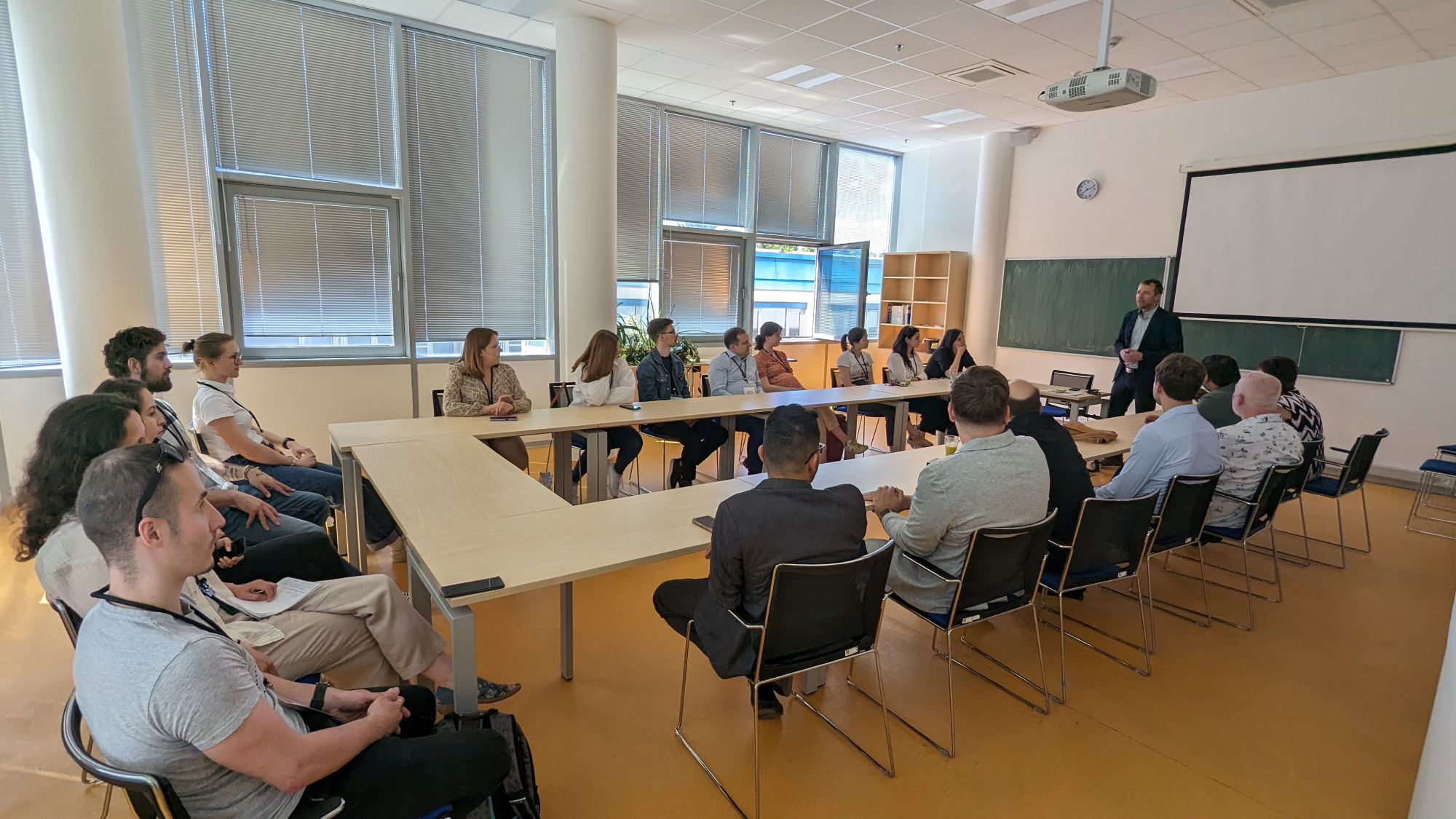
- Search term must have more than 2 characters.

Handbooks for AR/VR in Education
One of the main outcomes is a short handbook on AR/VR in education, designed to help teachers and students better understand these technologies and how to apply them in classrooms. The handbook explains the basics of AR/VR, the most commonly used platforms, and examples of how these tools can be integrated into lesson plans. In addition, scientific studies focusing on the use of VR in education are under peer review and will be published soon.
User Manual for VR Platforms
Another outcome of the project is a user manual for VR platforms, which is currently in preparation. This manual will serve as a practical guide for using VR technologies in educational settings. It covers both software and hardware aspects and will include several examples and instructions for users.
Joint Bachelor's Program in Biomedical Engineering (BSc)
The VIBE project also created a joint Bachelor's program in Biomedical Engineering, combining technical and medical fields to prepare students for careers in biomedical technology research, development, and application. The program spans eight semesters and includes theoretical subjects such as anatomy, physiology, biochemistry, and biomechanics, alongside practical training in laboratories and simulators. Students have the opportunity to earn a double degree from two European universities, giving them broader career prospects on the international job market.
MOOC Courses
VIBE has developed several MOOC courses that are available to the public and focus on different areas of biomedical and STEM education. Some of the most notable courses include:
VR Platforms and Applications
One of the practical tools developed by VIBE is a Laparoscopy VR Trainer, a low-cost training kit for laparoscopic surgery. The trainer is designed for beginners and can be used with Meta Quest 2 VR headsets in developer mode. The system allows students to practice laparoscopic techniques, using commonly available materials such as 3D-printed controllers and a cardboard box to simulate force feedback.
Another application is CellPick, a VR app designed for learning cell biology. The app is available on the Meta Quest platform and allows students to interactively explore cellular organelles and their functions. A tutorial video and detailed installation instructions are also available for users.
3D Modeling in VR
The project includes resources focused on 3D modeling in VR, with instructional videos and presentations about software tools like Gravity Sketch, Shapes XR, and Adobe Medium. These tools allow students to create and optimize 3D models for various applications, including medicine and engineering. The 3D modeling lessons cover basic concepts of 3D printing as well as advanced techniques in scanning and designing complex structures.
3D Printing and AR/VR in STEM/STEAM
The VIBE project also develops educational materials related to 3D printing, scanning, and using AR/VR technologies in STEM/STEAM education. These materials include presentations on the basics of 3D printing, its process, and practical applications in education, as well as resources for using AR/VR technologies in medicine.
Modern technologies and innovations are being made accessible to a broad audience through the VIBE project, including students, teachers, and professionals in biomedicine and related fields. By focusing on practical applications of AR/VR in education, the project closes the gap between theoretical learning and hands-on experience. This approach helps develop cutting-edge educational tools and prepares future professionals to meet the challenges of tomorrow’s scientific and technological advancements.


